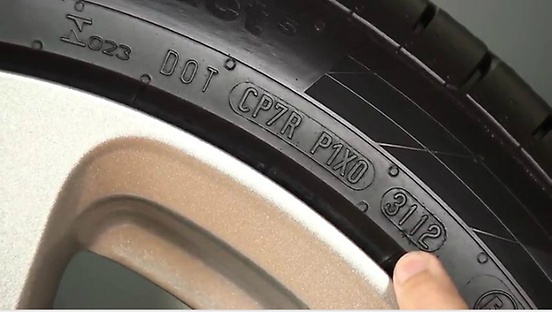Buying Tyres
There are a number of considerations when buying tyres but lets start with some of the key points.
The first is what size is my tyre? This can be found on the tyre’s sidewall information and will look something like 205/55R16.
The next important consideration is the tyre’s service description .This consists of two important pieces of information which indicates the tyre’s maximum load and speed capability. This can be found on the tyre’s sidewall usually directly after the size information, and consist of a number and letter. To determine the actual load and speed capability figures then refer to industry tables.
Tyre sidewall information

For example a tyre size of 205/55R16 indicates it has a section width of 205mm (nominal), 55 an aspect ratio of 55% (ratio of tyre sidewall height to section width H/S) and 16 the rim diameter in inches the tyre can be fitted.
Sidewall Desription
Dimension Designation
205 = Tyre width in mm
55 = Ration height to width in percent
R = Radial Design
16 = Rim diameter in inches
Load Speed & Index
Following the tyre size information is the service description e.g. 91V indicates a load index of 91, by referring to the load index table shows a maximum carrying capacity of the tyre of 615kgs and V a maximum speed of 240km/h (150mph).

Tyre Age
The tyre age can also be found by examining the characters following the symbol “DOT”. The last four numbers identify the date of manufacture of the tyre to the nearest week. The first two of these four numbers identify the week of manufacture (which range from “01” to “53”). The last two numbers identify the year of manufacture (e.g., a tyre with the information “DOT XXXX XXX 3112” was manufactured in the 31th week of 2012).

How to read a tyre sidewall

What type of vehicle do I drive?
The type of tyre required can vary with the type of vehicle to which it is fitted. The tyre size and service description can, to some extent, determine the type of tyre being fitted.
As the diversity in the different types of vehicles increases it becomes more important to ensure the correct type of tyre is fitted. A tyre will be designed to ensure it compliments the key characteristics of that type of vehicle with some of the different classifications being:
1) Compact class vehicles
2) Mid-sized and executive class vehicles
3) High Performance class vehicles
4) SUV´s
5) 4×4 and off road vehicles
6) MPV’s and vans
7) Camper vans
8) Hybrid & electric vehicles
A tyre may also carry an OE markings which are used to identify the homologated tyres for vehicles and offer end-consumers an option when it comes to changing their tyres.
It is always adviseable to consult a tyre expert (tyre manufacture or reputable tyre dealer).




